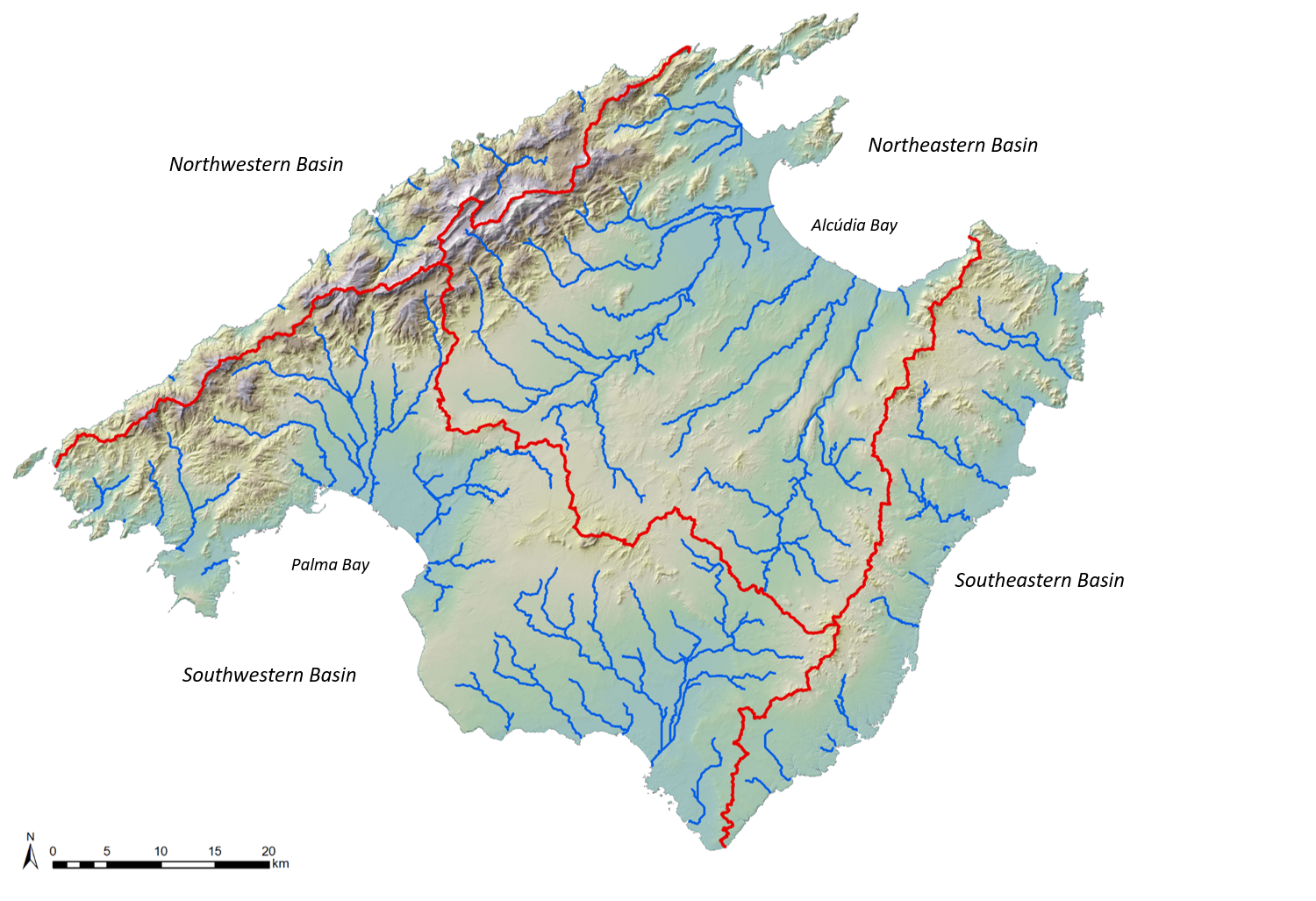Spatial flood connectedness in ephemeral streams: A spatio-temporal and probabilistic flood analysis in Mallorca
Background and aim
Mallorca, the largest of the Balearic Islands, is regularly affected by (flash) floods because of high precipitation intensities and a large fraction of impervious soils. These extreme events can lead to large infrastructural and financial damages and sometimes even fatalities particularly in urban and touristic areas [Grimalt-Gelabert et al., 2020]. Such damages may be especially severe if several regions are affected by flooding at once. The likelihood of regional flooding depends on how floods are spatially connected and it has been shown that such spatial flood connectedness varies both in time and space depending on flood generation processes [Brunner et al., 2020]. Floods in the Mediterranean region are mostly caused by intense rainfall in summer and fall and it is yet unknown whether and how such (flash) flood events in ephemeral streams are spatially connected. This thesis therefore aims to assess to which degree and under which circumstances flash floods in Mallorca are spatially connected.
Data and Methods
The analysis builds on a historical flood databased documenting flood occurrence for Mallorca (Figure 1) since 1950 [Llasat et al., 2013]. The database contains information on the date and location of flood occurrence collected through regional newspapers, local weekly papers, and regional and local administration reports. You will (1) use network analysis to map seasonal spatial flood connectedness patterns in Mallorca, (2) statistically evaluate the occurrence probability of local and regional flood events, and (3) assess how these probabilities have changed over time.
 Figure 1: Four main basins can be identified in Mallorca, with a lowland (Es Pla) lying between two mountainous areas, serra de Tramuntana (NW) and serres de Llevant (SE). The largest catchments discharge towards the northern and southern bays while the smallest and steepest catchments are located in the two mountainous areas.
Figure 1: Four main basins can be identified in Mallorca, with a lowland (Es Pla) lying between two mountainous areas, serra de Tramuntana (NW) and serres de Llevant (SE). The largest catchments discharge towards the northern and southern bays while the smallest and steepest catchments are located in the two mountainous areas.
Challenges
You will improve your data management, visualization, statistical and R-programming skills by organizing a unique database, producing informative maps of spatial flooding patterns, performing flood frequency and trend analyses, and adapting existing and developing new R-code.
Supervision
Manuela Brunner (University of Freiburg) in collaboration with Dr. Joan Rossello-Geli (Universitat de les Illes Balears)
Contact
Manuela Brunner manuela.i.brunner@gmail.com
Language
English
Literature
- Brunner, M. I., E. Gilleland, A. Wood, D. L. Swain, and M. Clark (2020), Spatial dependence of floods shaped by spatiotemporal variations in meteorological and land-surface processes, Geophys. Res. Lett., 47, e2020GL088000, doi:10.1029/2020GL088000.
- Grimalt-Gelabert, M., J. Rosselló-Geli, and J. Bauzà-Llinàs (2020), Flood related mortality in a touristic island: Mallorca (Balearic Islands) 1960–2018, J. Flood Risk Manag., 13(4), 1–13, doi:10.1111/jfr3.12644.
- Llasat, M. C., M. Llasat-Botija, O. Petrucci, A. A. Pasqua, J. Rosselló, F. Vinet, and L. Boissier (2013), Towards a database on societal impact of Mediterranean floods within the framework of the HYMEX project, Nat. Hazards Earth Syst. Sci., 13(5), 1337–1350, doi:10.5194/nhess-13-1337-2013.